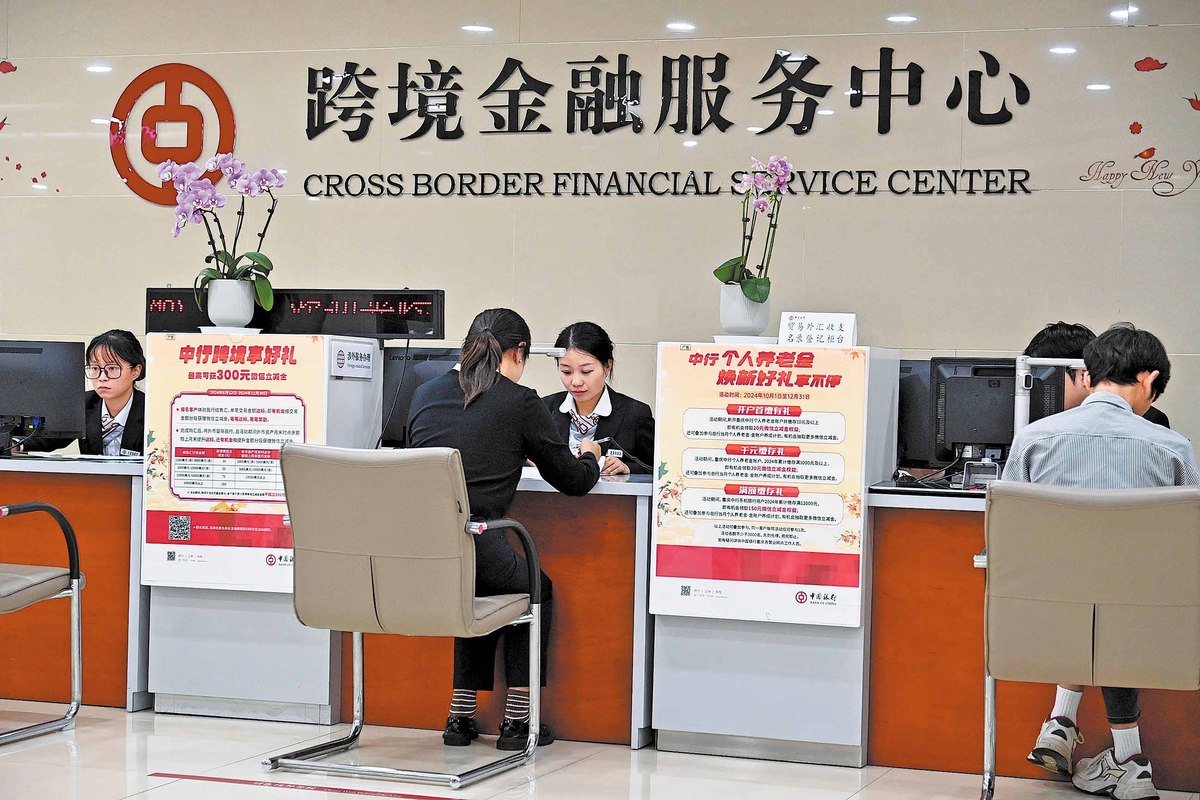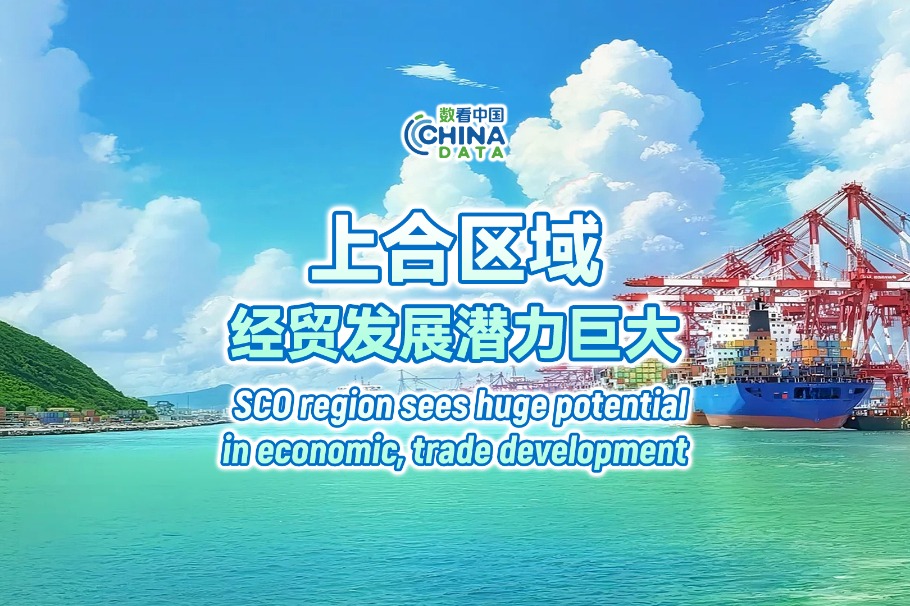Leading lenders have standout Jan-June run
Six largest State-owned banks directed funds to key sectors; tech beneficiary


China's six largest State-owned commercial banks reported solid interim results for the first half, highlighting progress in optimizing credit structures and channeling more financing to the real economy. Loan growth in green, inclusive and tech finance outpaced overall lending expansion, underscoring their shift toward priority sectors.
Lou Feipeng, a researcher at Postal Savings Bank of China, said the lenders made clear headway by directing funds to key industries and areas with weaker access to financing. Looking ahead, Lou expects them to sustain this focus in the second half, prioritizing manufacturing, green finance and inclusive finance.
He added that higher-quality credit allocation will hinge on stronger policy guidance, continued optimization of credit structures, accelerated digital transformation and enhanced risk management.
Bank of China ramped up lending to key sectors in the first half, with equipment upgrade loans surpassing 90 billion yuan ($12.62 billion) by the end of June. Loans to the manufacturing sector rose 12.99 percent from the end of last year, while lending to strategic emerging industries jumped 22.92 percent. The bank also expanded its technology financing, seizing opportunities in artificial intelligence and tech-focused mergers and acquisitions. Outstanding technology loans stood at 4.59 trillion yuan, making up more than 30 percent of its corporate loan portfolio.
Zeng Gang, chief expert and director of the Shanghai Institution for Finance & Development, said large State-owned commercial banks have been focusing on stabilizing growth, optimizing credit structures and driving innovation. They have followed national policy guidance by channeling more medium and long-term financing to advanced manufacturing, equipment renewal, and specialized and innovative enterprises. Banks have also stepped up support for new energy, energy efficiency and low-carbon projects in industrial parks through green lending and carbon-reduction financing tools, Zeng said.
By the end of June, Industrial and Commercial Bank of China's tech loans climbed to 6 trillion yuan, up 20 percent from a year earlier. Green lending also surpassed 6 trillion yuan, growing 16.4 percent, while inclusive finance loans rose 17.3 percent to 3.4 trillion yuan. Loans to core digital economy sectors crossed the 1 trillion yuan mark, an increase of 19.3 percent.
China Construction Bank posted similar results. As of end-June, its tech loans stood at 5.15 trillion yuan, up 16.81 percent from the end of last year. Lending to strategic emerging industries expanded 18.92 percent to 3.39 trillion yuan. Green loans grew 14.88 percent from the beginning of the year to 5.72 trillion yuan, while lending to digital economy industries rose 13.44 percent to 852.4 billion yuan.
Looking ahead, Zeng said large State-owned commercial lenders will prioritize advanced manufacturing, commercialization of scientific breakthroughs, technology upgrades, green energy and power systems, as well as inclusive finance for small businesses, first-time loans for private firms, affordable housing and urban renewal.
To ensure higher-quality credit allocation, he stressed the need to balance growth with risk control, pricing with risk and loan speed with structural optimization — aligning financing more closely with industrial policy, regional planning and capital market development.
In the first half, large State-owned banks kept overall asset quality stable, with nonperforming loan ratios at relatively low levels, high provision coverage and sufficient buffers to absorb potential risks, said Lou.
Looking to the second half, their asset quality is expected to remain broadly manageable but could face rising pressure and diverging risks across sectors, making stronger forward-looking risk management essential, Zeng said.
Dong Ximiao, chief researcher at Merchants Union Consumer Finance, said effective credit demand from the real economy still needs to be bolstered.
"Banks will continue to face considerable pressure from asset quality risks, particularly in inclusive finance for small and micro enterprises, real estate and other areas where credit and noncredit risks have yet to be fully revealed. Household credit asset quality also requires close monitoring," said Dong.
He stressed that accelerating the disposal of existing risks while preventing new ones remains a priority.




































